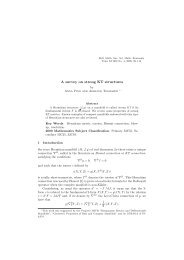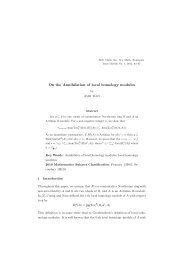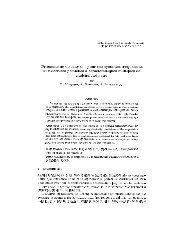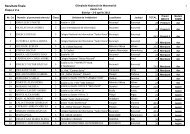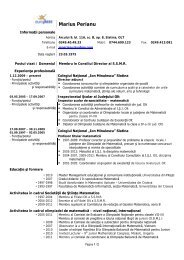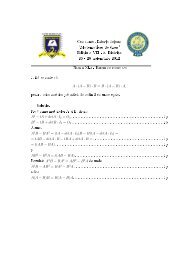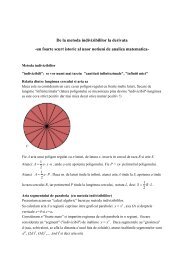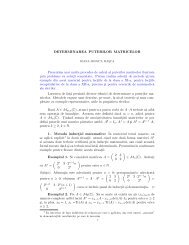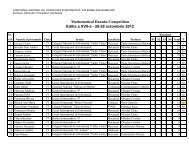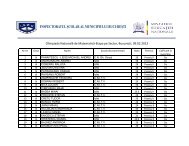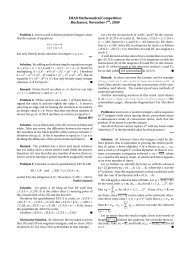Create successful ePaper yourself
Turn your PDF publications into a flip-book with our unique Google optimized e-Paper software.
R. Gologan and C. Lupu, An Olympiad problem 211that:or:∫ ccwhich is equivalent to:0H ′ (c) = H(c)−H(0)c∫ cf(x)dx = c∫ c00∫ cf(x)dx −xf(x)dx =0.0xf(x)dx,An extension of theorem 1.1 was given in [4], namely:Theorem 1.1. Let f,g :[0,1] → R be two continuous functions. Thereexists c ∈ (0, 1) such that:∫ 10∫ cf(x)dx0xg(x)dx =∫ 10∫ cg(x)dx0xf(x)dx.The proof is almost the same with the second proof of theorem 1.1, onlythis time we shall consider the function ˜H :[0,1] → R defined by:∫ 1 ⎛∫ t ∫ t ⎞˜H(t) = f(x)dx ⎝t g(x)dx − xg(x)dx⎠ −∫ 1−00⎛g(x)dx ⎝t∫ t00∫ tf(x)dx −00⎞xf(x)dx⎠ .The proof of the main result involves some non-elementary facts. Thefollowing lemma will be used.Lemma 1.2. Let h :[0,1]→R be a continuous function and φ :[0,1]→R is nondecreasing, continuous in 0 and φ(0) = 0. Then:limt→0 +∫t0h(x)φ(x)dxφ(t)=0.Proof. We assume by contradiction that limt→0 +∫t0h(x)φ(x)dxφ(t)≠0.




